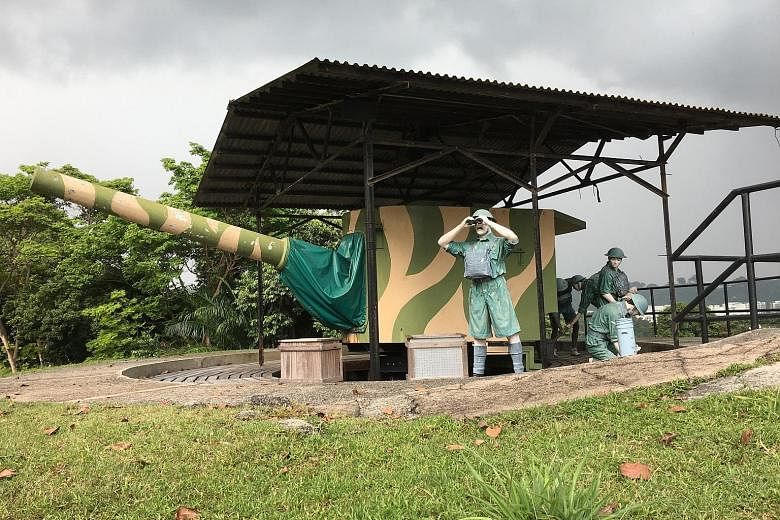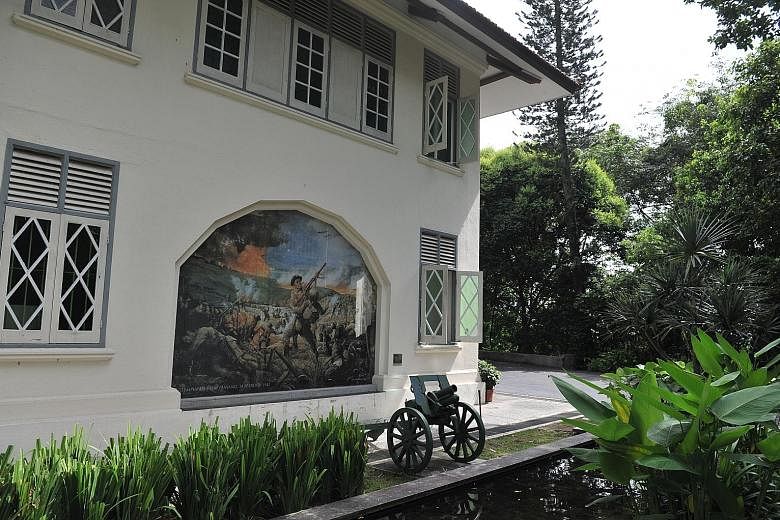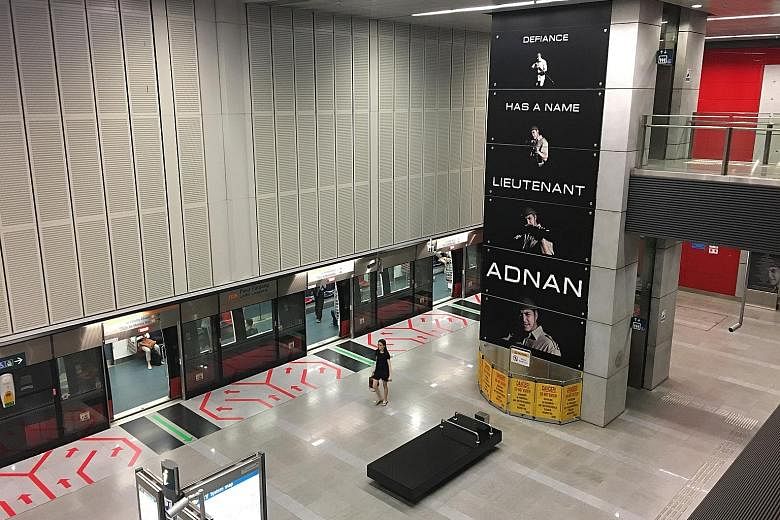On the western end of Sentosa stands what is perhaps Singapore's most maligned gun.
This six-inch breech-loading MK VII gun formed part of the coastal defence, aimed southwards out to sea in anticipation of a naval attack as World War II rapidly approached Singapore's shores.
It is also supposedly one of the guns that, according to urban legend, never turned or fired when the Japanese came from the north instead, an ignominious symbol of the meek capitulation that was the fall of Singapore 75 years ago.
Standing near the gun emplacement at Fort Siloso - one of several historic war sites I am visiting over the course of several days - I have a commanding view of the vast expanse of waters it was supposed to protect.
It is a slow day at the fort and one of the few people I meet is polytechnic student Iman Alif, 20, who is filming a video at the military facility-turned-tourist attraction for his school work.
When I ask him if he has heard of the story of the guns that never turned, he replies: "I remember reading in a secondary school textbook that the guns were all facing the wrong direction, so I assume that's what happened."
But the guns did turn. And they did fire.

A display at the fort calls it "a famous myth" that the Fort Siloso guns never saw action. They, in fact, rotated and fired landward at Japanese troops advancing in the West Coast Road area and even sank a Japanese troop ship that was nearing Singapore.
But because the guns were loaded with armour-piercing ammunition meant to repel ships, they were ineffective against soldiers manoeuvring on land.
When surrender was imminent, the guns were turned on the oil installations on Pulau Bukom as part of a scorched-earth policy to not leave anything behind that might be of use to the enemy.
The original guns were destroyed by the surrendering British forces to prevent them falling into the hands of the Japanese invaders, so visitors to Fort Siloso today have to make do with seeing a replica.
Across the narrow waterway from Fort Siloso to the main Singapore island was Fort Pasir Panjang, which was later turned into Labrador Park.
The naval guns there also turned around to fire on Japanese soldiers who were in Pasir Panjang, locked in fierce combat with the Malay Regiment.
The British commanders simply did not anticipate that the heaviest fighting would take place in the west of Singapore.
Lieutenant-General Arthur Percival, who headed the defence of Malaya, believed the main Japanese offensive would come east of the Causeway and so he concentrated his six brigades of troops, his strongest forces, there.
Two less experienced brigades were stationed in the north-west, where, as it turned out, the bulk of Japanese troops would land.
PAYING THE ULTIMATE PRICE
The most celebrated among the men of the Malay Regiment is Lieutenant Adnan Saidi, who led his troops in a fight to the death against the Japanese at Bukit Chandu.
It is a legacy that is honoured by artwork at the nearby Pasir Panjang MRT Station.
"Defiance has a name: Lieutenant Adnan," declares a two-storey, vertical banner in the centre of the train platform that depicts the soldier as an action-film star.
From the station, I walk uphill for about 15 minutes along a quiet, winding road towards the Reflections at Bukit Chandu heritage centre, located close to the actual ground that Lt Adnan and his men gave their lives to defend.
The colonial bungalow that houses the memorial is cloistered in thick foliage. I walk past a couple of secluded carparks where I spot a taxi driver who has reclined his car seat to take an afternoon nap.
There are few visitors at the centre. A father-and-son duo sheepishly say they are just enjoying the air-conditioning and hurry off to continue their day hike, while an Australian tourist says she was lost and happened to wander in.
Soon after, a group of about 15 full-time national servicemen arrives by bus for a national education tour with a guide, Ms Sheila Sim, 50.
For about an hour, she leads them through the exhibit, recounting the exploits of the 1,400 Malay Regiment soldiers during their 48-hour struggle against a 13,000-strong Japanese force.
Lt Adnan was part of the company of soldiers told to hold Pasir Panjang Ridge. They fended off the Japanese troops for most of the first day of fighting, retreating only in the evening as their losses mounted and supplies thinned.
All this while, British forces all over Singapore had been withdrawing further towards the south, unable to withstand the Japanese onslaught.
The lieutenant and his men then set up camp at Bukit Chandu, where they made their last stand on the second day, Feb 14, 1942. Even when ammunition was depleted, they refused to yield and engaged in hand-to-hand combat until they were eventually overrun.
Lt Adnan was captured, hung from a tree and bayoneted until he drew his last breath.
And, the very next day, the British waved the white flag of surrender, having been left with only 24 hours of water supply after losing all the reservoirs.
Ms Sim has been doing such tours for students and full-time national servicemen for the past nine years. She says they are generally attentive and receptive to the central message: Singaporeans must defend the country themselves.
She is unfazed when I point out that the young men in their camouflage uniforms listened mostly in silence and were reticent when they were asked questions.
"They need time to process the lessons of history. It's good enough to give them something to ponder about," she says.
THE THREAT ARRIVES
It took the Japanese just one week to conquer Singapore from the moment they set foot on the island at its north-western coastline.
The road towards the Sarimbun Beach landing site takes me away from city life. I go past a cemetery, military camps, and vegetable and fish farms. This is the closest to a countryside that Singapore gets.
Turning off Lim Chu Kang Road, I head down a wide gravel path until a bronze marker set up by the National Heritage Board tells me I am in the right place.
On the night of Feb 8, 1942, soldiers from the fifth and 18th Japanese Divisions crossed the narrow Strait of Johor in small boats.
While the first two waves of attacks were repelled by Australian troops, the third wave broke through and captured Tengah Airbase the following morning.
I try to walk further, but a sturdy metal fence topped with barbed wire - set up in 2003 to deter illegal immigrants - prevents me from getting close to the water's edge.
More recent security concerns have literally become a barrier to the past.
So I seek out a second landing site, heading back to Lim Chu Kang Road and following it until it ends just short of the Strait of Johor.
A wooden jetty leads out to the open water and the high-rise buildings on the Malaysian side of the border are visible even in the fading evening light.
Here, the Japanese trudged through the muddy, mangrove- lined shore, beginning their lightning invasion that would lead to a fraught Occupation lasting for more than 31/2 years.
SEE HOME
READ MORE Tomorrow: Surrender, and what followed.





